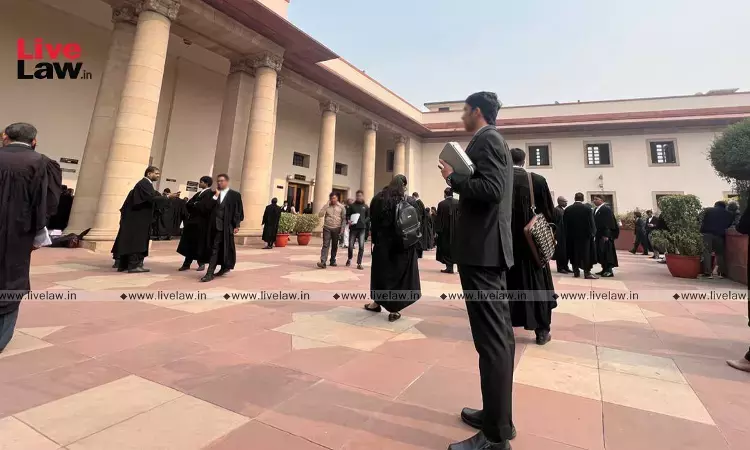
In its history of 14 years, Common Law Admission Test (CLAT ) has gone wrong on many levels. This is an attempt to give suggestions on certain corrective steps, which could be adopted. MODE OF EXAMINATION: The mode of the examination in a competitive test is very relevant, in the case of CLAT it has been a roller coaster ride. The CLAT was conducted in the offline mode from 2008...
In its history of 14 years, Common Law Admission Test (CLAT ) has gone wrong on many levels. This is an attempt to give suggestions on certain corrective steps, which could be adopted.
MODE OF EXAMINATION:
The mode of the examination in a competitive test is very relevant, in the case of CLAT it has been a roller coaster ride. The CLAT was conducted in the offline mode from 2008 – 2014 (7 years), and then in the online mode from 2015 – 2018 (4 years) and then again in the offline mode in 2019 (1 year) and then shifted back to the online mode in 2020 (1 year). As of now, the mode of CLAT is again shifted back to offline as of 2021. Thus the mode of examination was changed 4 times in 14 years.
The mode of the exam was changed in 2015 after CLAT 2014 for the first time when the authorities which conducted CLAT 2014 introduced the concept of 'barcode' in the OMR sheet, which needs to be matched with the one which is being carried by the invigilator. The whole concept backfired and a lot of students' result got botched. The result was withdrawn after a few days, the issue was resolved after thorough investigation and a fresh result was published a week after the previous result.
The mode of examination was again changed in 2019 after CLAT 2018, that year the exam was conducted in one of the most unorganised manner to an extent that even Supreme Court of India acknowledged it in its judgment post CLAT 2018 . Due to the software glitch that year, thousands of students got more time than the scheduled 120 minutes to take the exam and another set of students got less time. This caused a lot of disparity in the exam results, compelling the the Supreme Court to comment that there was no fairness in the examination . This forced the CLAT authorities to change the mode of the exam for CLAT 2019 , which lead to formation of a 'Consortium' to conduct CLAT in a better way.
Again in 2020, the mode of the exam changed from offline to online and this time, it was done, just two months before the actual exam. The reason given by the authorities was the pandemic. It is interesting to note that the very same year, NEET (which had 15 lakh aspirants as against 60,000 aspirants for CLAT) was conducted offline) . CLAT 2020, which was conducted online had issues as well. The instructions with respect to the examination was changed at the last moment and a lot of students were not in a position to go through those. They were given late entry in the examination hall due to social distancing. The option of 'calculator' was taken away from the students at the last moment, just a few days before the date of the examination. And lastly, thousands of students alleged that there was a difference in the answers which were actually marked in the answer key to the ones which was actually marked by them. The authorities used a defence by taking advantage of the language used in the instructions for the examination, the aspirants claimed otherwise.
With respect to the 'Home Proctored Examination', the sanctity of the exam gets compromised completely. It is extremely easy to cheat in a home proctored examination even if it is AI proctored. Using an HDMI cable or a VGA cable, one can easily make it possible to project the computer screen on TV, projector, LED screen or any monitor, makes it possible for to cheat. A third party (other than the aspirant) can impersonate while the actual student just sitting in front of the screen pretending to be attempting the examination .
Keeping all the above factors in mind, the safest is the OFFLINE mode. It faced hassles once in 2014, which was fully resolved by the authorities within a week, unlike the problems faced by the online mode in 2018 and the alleged irregularities in 2020, which are not corrected till date.
FAULTY QUESTIONS OR WRONG ANSWERS:
On numerous occasions, there have been wrong answer keys given, in some occasions, the CLAT authorities have taken the initiative of correcting their mistakes but this process started only since CLAT 2014, six years after the examination system was introduced. The wrong answers prior to that had gone unnoticed. Many of such wrong answer stand uncorrected even today. Imagine a paper of 150 marks taken by 60,000 students, one wrong answer can change the fortune of hundreds of students. This has never been given too much of importance. Another issue is that of faulty questions, which has been a part of CLAT, admittedly, four times in CLAT 2015, CLAT 2017, CLAT 2019 and CLAT 2020. The biggest issue with faulty questions is that, by cancelling the question, you might cancel the marks gained by some of the students, but you can never compensate for the time lost by the student in attempting that faulty question.
CONDUCTING OF EXAM:
a) Age Factor and Number of Attempts: There is no bar on age as well as limit on number of attempts in the exam of CLAT, which help the so called experienced students to appear in the examination and medicore getting through . If we introduce a bar on the number of attempts, a major problem could be solved. Introducing a bar on age limit is slightly difficult as it was done as per an order of Allahabad High Court in 2014, which perhaps make CLAT, the only national examination in the country with no age bar as well as no bar on number of attempts.
b) No (or namesake) sets as well as social distancing: The second issue, which has been faced by the aspirants recently in CLAT 2019, there were four sets of the question papers, but there were hardly any difference in the sets (the difference being in the section order- if Set- A has English as its first section, then Set- B had English as its second section, but sadly the order of questions and options were exactly the same). This situation creates a bigger problem of mass cheating in the examination, as there is hardly any social distancing in the examination. With the only difference in the section order and not in the question order or options, cheating becomes very easy. The paper of NEET has many as 26 sets, while CLAT only has 4 sets, that too namesake. An ideal exam (like NEET and JEE) has SETs where, the difference is reflected in the section order and also in the order of questions in each section as well as in the order of options in each question. Also, in CLAT 2020, sady there was only SET, which was given to each and every student appearing the exam. This created a huge problem as the chances of mass cheating can be immense.
The attempt of this article is not to create negativity or make allegations against the Consortium, it is just an attempt to have a fair CLAT.
Views are personal. The author may be reached at 1990.shashank@gmail.com.




